Web5: The Dawn of a New Era
 Abdulkareem Babatunde
Abdulkareem Babatunde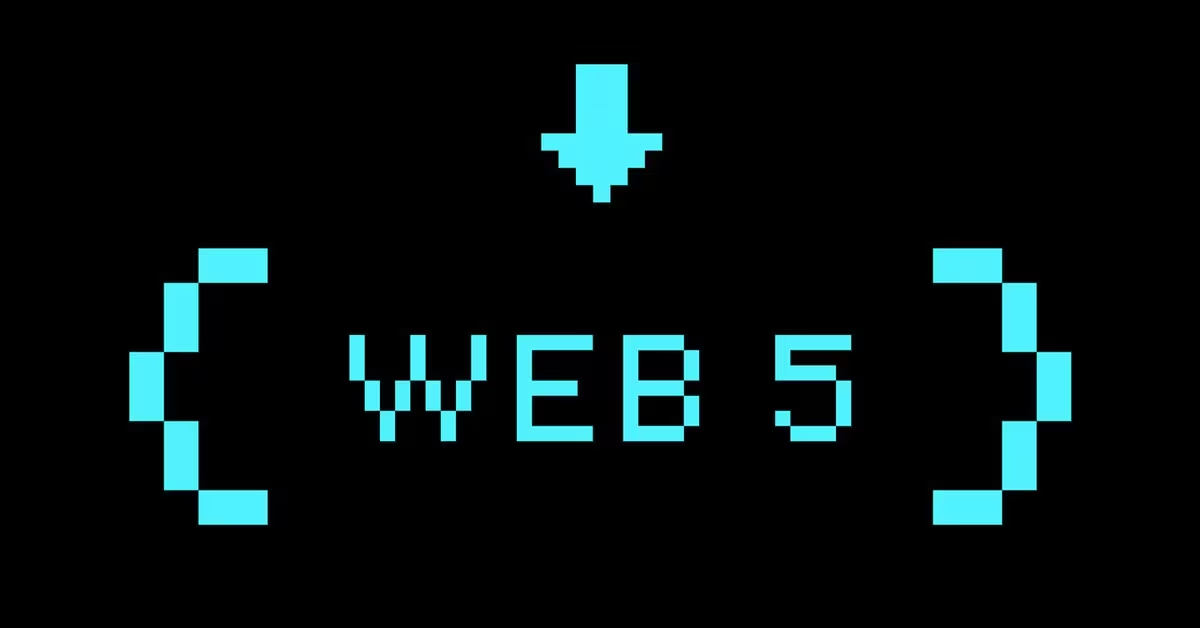
1. Unveiling the Web5 Revolution
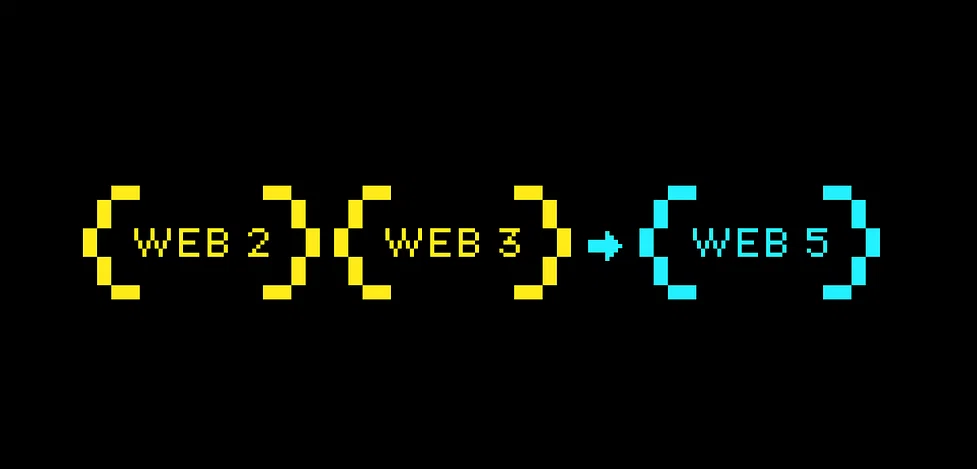
Web5: The Dawn of a Decentralized Future
The internet, a ubiquitous force in today's world, has undergone a remarkable evolution, transforming from a niche academic network into an indispensable tool for communication, commerce, and entertainment. However, amidst its transformative impact, the internet's architecture has remained largely centralized, with a handful of tech giants wielding immense control over our digital lives. This centralization has raised concerns about data privacy, censorship, and user empowerment, paving the way for a paradigm shift towards a decentralized future – enter Web5.
Web5, the next generation of the internet, emerges as a beacon of hope, promising to address the shortcomings of the current centralized model. At its core, Web5 embodies the principles of decentralization, empowering users to reclaim ownership of their data and identities. This decentralized approach envisions a web where users, not tech giants, control their digital interactions, fostering a more equitable and secure online environment.
The genesis of Web5 lies in the inherent flaws of the current web architecture. The centralized control exercised by tech giants has resulted in several critical issues, including:
Data Silos: User data is fragmented and siloed within the platforms they use, limiting transparency and control.
Privacy Concerns: The vast troves of user data collected by tech giants raise concerns about privacy and potential misuse.
Censorship: Centralized control facilitates censorship and suppression of dissenting opinions.
Lack of User Empowerment: Users have limited control over their data and online experiences.
Web5 addresses these concerns by introducing a decentralized architecture that empowers users and fosters data sovereignty. Decentralized identifiers (DIDs) serve as unique digital identities, allowing users to control and share their data securely and selectively. Verifiable credentials provide a tamper-proof mechanism for verifying claims and attributes, enhancing trust and security in online interactions.
Decentralized web nodes (DWNs) form the backbone of Web5's infrastructure, providing a distributed network for data storage and retrieval. This decentralized architecture eliminates the reliance on centralized servers, mitigating the risks of data breaches and censorship.
The transition to Web5 will not be without its challenges. Scalability, security, and user adoption pose significant hurdles that need to be addressed to ensure the widespread adoption of this transformative technology. However, the potential benefits of Web5, particularly in terms of data privacy, censorship resistance, and user empowerment, far outweigh the challenges.
Web5 represents a pivotal moment in the history of the internet, ushering in an era where users reclaim control of their digital lives. By embracing decentralization, Web5 has the potential to revolutionize the way we interact, transact, and experience the internet, fostering a more equitable, secure, and empowered digital world.
Embracing the Paradigm Shift: Understanding Web5 and Its Implications
The emergence of Web5 marks a fundamental shift in the trajectory of the internet, moving away from the centralized control that has dominated its evolution. This paradigm shift brings about a plethora of transformative implications that extend far beyond the realm of technology, impacting various aspects of our digital lives.
One of the most significant implications of Web5 is the empowerment of users. In the current centralized model, users are often treated as mere data points, their personal information exploited for commercial gain without their explicit consent. Web5, with its emphasis on user ownership of data and decentralized control, disrupts this paradigm, placing users at the center of the digital ecosystem.
Users will gain unprecedented control over their data, deciding how and with whom they share it. This shift in data ownership fosters a more transparent and accountable online environment, empowering users to make informed decisions about their digital footprints.
Web5's decentralized architecture also has profound implications for privacy and censorship resistance. The centralized control of data in the current web has facilitated the widespread collection and analysis of user data, raising concerns about privacy violations and surveillance. Web5's decentralized approach, with its emphasis on user ownership and control, mitigates these risks, making it more difficult for entities to track and monitor user activities without their consent.
Furthermore, Web5's distributed nature makes it inherently resistant to censorship. Content is no longer confined to centralized platforms, but rather distributed across a vast network of DWNs. This decentralized architecture makes it challenging to suppress or remove content, fostering a more open and unfettered exchange of information.
The transformative implications of Web5 extend beyond individual users, impacting businesses and society as a whole. Businesses will need to adapt to a new paradigm of data ownership and user empowerment, fostering trust and transparency through responsible data management practices. Decentralized applications (DApps) built on Web5's infrastructure offer businesses a new avenue for innovation, enabling them to create secure, transparent, and user-centric applications.
Web5 also holds immense promise for redefining the relationship between governments and citizens. With its emphasis on user control and data sovereignty, Web5 can empower citizens to hold their governments accountable for their actions, fostering a more transparent and democratic society.
The paradigm shift brought about by Web5 is not merely a technological revolution; it is a societal transformation, reshaping the way we interact, transact, and experience the digital world. As Web5 continues to evolve, its implications will continue to unfold, shaping the future of the internet and its impact on society.
Decentralizing the Internet Landscape: A Journey into Web5 Architecture
At the heart of Web5's transformative potential lies its decentralized architecture, a fundamental shift from the centralized control that has characterized the current web. This decentralized approach disrupts the traditional model of data ownership and control, placing users in the driver's seat of their digital lives.
Decentralized identifiers (DIDs) serve as the cornerstone of Web5's architecture, acting as unique digital identities for individuals, organizations, and devices. These DIDs are self-sovereign, meaning that they are not controlled by any central authority. Instead, individuals and organizations manage their DIDs, granting or revoking access to their data as they see fit. This self-sovereignty empowers users to control their digital identities and decide how and with whom they share their information.
Verifiable credentials, another crucial component of Web5's architecture, provide a tamper-proof mechanism for verifying claims and attributes associated with DIDs. These credentials can be issued by trusted entities, such as educational institutions or employers, and can be used to prove qualifications, certifications, or other relevant information. Verifiable credentials enhance trust and security in online interactions, enabling users to securely share their credentials without compromising their privacy.
Decentralized web nodes (DWNs) form the backbone of Web5's infrastructure, providing a distributed network for data storage and retrieval. These DWNs, collectively known as the Web5 network, store and manage data in a decentralized manner, eliminating the reliance on centralized servers. This decentralized architecture offers several advantages, including:
Enhanced Security: Data is distributed across multiple DWNs, making it more resilient to cyberattacks and data breaches.
Improved Scalability: The distributed nature of the Web5 network allows for efficient scalability, accommodating the growing volume of data and users.
Increased Availability: Data stored on the Web5 network is highly available, as any node can provide access to the information.
The decentralized architecture of Web5 extends beyond data storage and retrieval, encompassing the entire ecosystem of online interactions. Decentralized applications (DApps) built on the Web5 network offer a new paradigm for user-centric applications. These DApps operate without the need for centralized intermediaries, providing users with direct control over their data and interactions.
DApps have the potential to revolutionize various industries, from finance and healthcare to social networking and entertainment. For instance, decentralized finance (DeFi) applications enable users to manage their finances without relying on traditional financial institutions, fostering greater financial inclusion and transparency.
The journey into Web5 architecture is a continuous process of innovation and adaptation. As the technology matures, new components and protocols will emerge, further enhancing the decentralization and security of the Web5 ecosystem. The transformative power of Web5's decentralized architecture lies in its ability to empower users, foster trust, and reshape the way we interact and transact online. By embracing decentralization, Web5 has the potential to revolutionize the internet, ushering in an era of greater user control, data sovereignty, and a more equitable digital landscape.
2. Delving into the Core Concepts of Web5
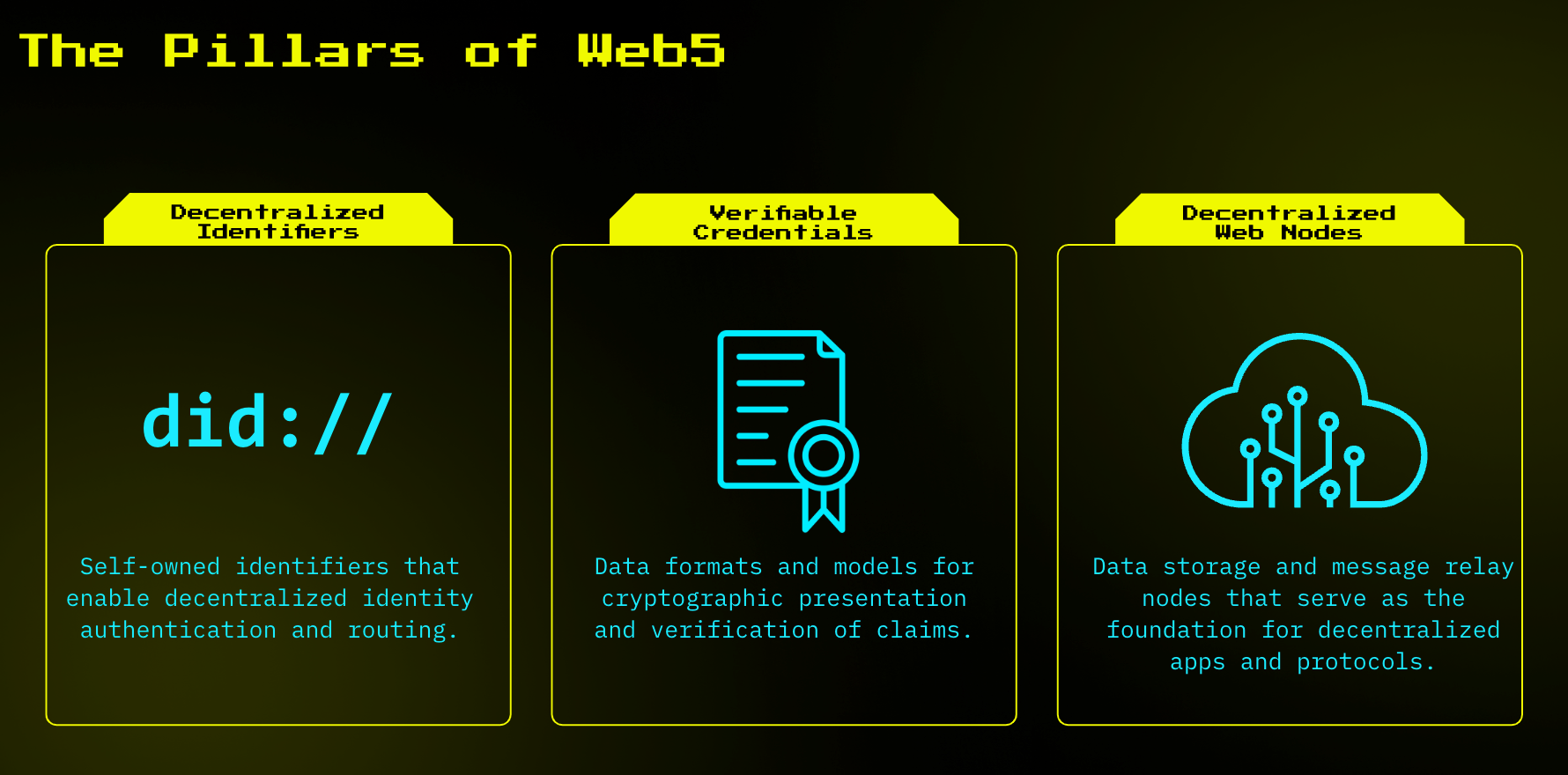
Understanding the Core Concepts: Decentralized Identifiers, Verifiable Credentials, and Decentralized Web Nodes
Delving deeper into the core concepts that underpin Web5's architecture, we embark on a journey to unravel the intricate workings of decentralized identifiers (DIDs), verifiable credentials, and decentralized web nodes (DWNs). These fundamental building blocks play a pivotal role in enabling a decentralized web, empowering users and fostering a secure, transparent, and user-centric digital ecosystem.
Decentralized Identifiers (DIDs): The Foundation of Self-Sovereign Identity

DIDs serve as the cornerstone of Web5's decentralized identity management system. Unlike traditional identifiers that are linked to centralized platforms or authorities, DIDs are self-sovereign, meaning that individuals and organizations have complete control over their own digital identities.
Each DID is a unique and tamper-proof string of characters that represents a specific entity, whether it's an individual, an organization, or a device. DIDs are not controlled by any central authority, but rather reside on a distributed ledger, such as a blockchain, ensuring the integrity and immutability of identity information.
DIDs empower users to control who has access to their data and how it is used. They can selectively share their identity information with specific individuals or organizations, granting or revoking access as they see fit. This self-sovereign identity management system fosters greater privacy and control over personal data, a fundamental tenet of Web5.
Let's explore examples of Decentralized Identifiers (DIDs) found across different platforms, including the Bitcoin blockchain, the Ethereum blockchain, and the web. It's interesting to note that they all follow a uniform structure encompassing a scheme, a DID method, and a DID method-specific identifier.
did:btcr:xyv2-xzpq-q9wa-p7t
did:ens:some.eth
did:web:example.com
As personal data is not directly stored on the blockchain, the Decentralized Identifier (DID) functions essentially as a URI linking the DID subject (which could be a person, company, or object) to a DID document located off-chain.
These DID Documents, typically in JSON format, are stored in decentralized storage systems like IPFS. They outline instructions on how to engage with the identified subject. Within the DID Document, crucial information is included, such as public keys, authentication and verification methods, and service endpoints. These endpoints specify where the subject's data is located.
{
"@context": "https://www.w3.org/ns/did/v1",
"id": "did:ion:EiClkZMDxPKqC9c-umQfTkR8",
"verificationMethod": [
{
"id": "did:ion:EiClkZMDxPKqC9c-umQfTkR8",
"type": "Secp256k1VerificationKey2018",
"controller": "did:ion:EiClkZMDxPKqC9c-umQfTkR8"
}
],
"authentication": ["did:ion:EiClkZMDxPKqC9c-umQfTkR8"]
}
Verifiable Credentials: Establishing Trust in Digital Claims
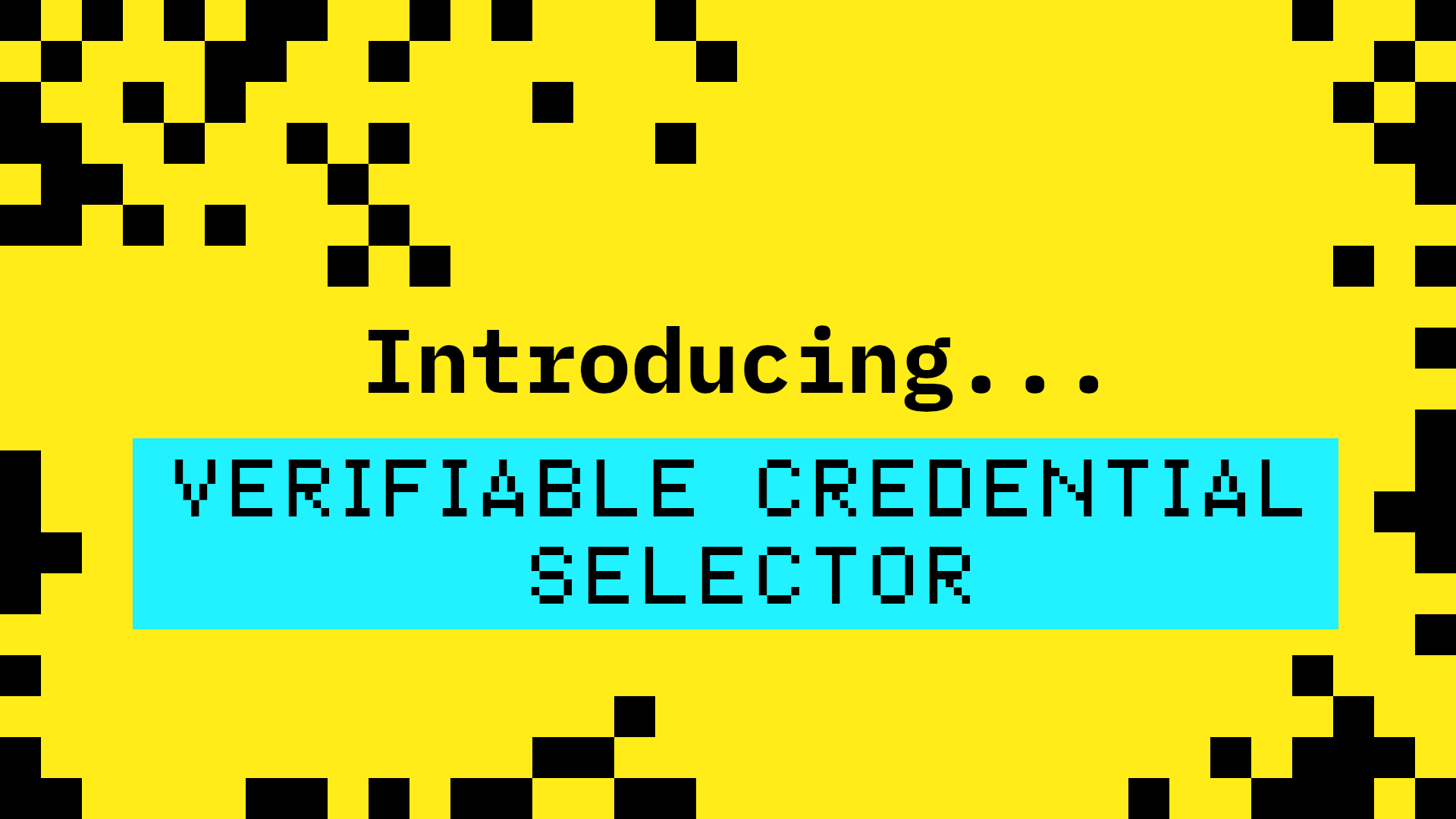
Verifiable credentials serve as the mechanism for verifying claims and attributes associated with DIDs. These credentials, issued by trusted entities such as educational institutions or employers, provide a tamper-proof way to prove qualifications, certifications, or other relevant information.
Unlike traditional credentials that are often stored in centralized silos, verifiable credentials are issued and stored on the Web5 network, ensuring their accessibility and security. Each credential is digitally signed by the issuer, guaranteeing its authenticity and preventing unauthorized alteration.
When a user presents a verifiable credential, it can be quickly and easily verified by any party using a Web5-compatible application. This verification process ensures that the credential is genuine and has not been tampered with, fostering trust in online interactions and enabling secure and transparent sharing of information.
Decentralized Web Nodes (DWNs): The Distributed Backbone of Web5
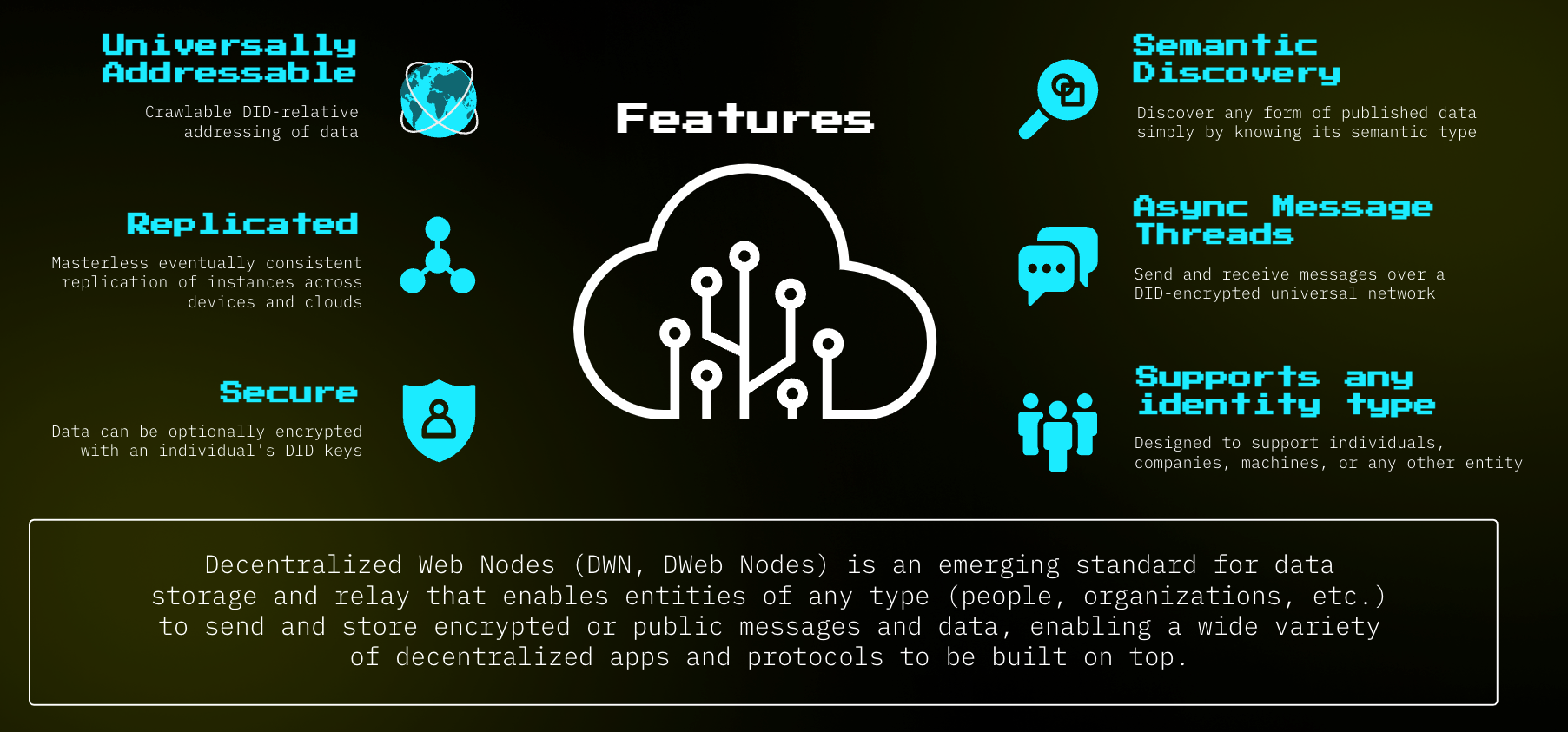
DWNs form the backbone of Web5's infrastructure, providing a distributed network for data storage and retrieval. These nodes, collectively known as the Web5 network, are responsible for storing and managing data in a decentralized manner, eliminating the reliance on centralized servers.
Unlike traditional web servers that store data in centralized locations, DWNs are distributed across a vast network of nodes, making the data more resilient to cyberattacks and data breaches. This decentralized storage mechanism also enhances data availability, as any node can provide access to the information.
The distributed nature of DWNs also plays a crucial role in ensuring the scalability of the Web5 network. As the volume of data and users grows, the network can seamlessly accommodate the increased demand by adding more nodes, allowing the Web5 ecosystem to grow and evolve without compromising performance.
The core concepts of Web5 – DIDs, verifiable credentials, and DWNs – work in synergy to create a decentralized and user-centric web ecosystem. DIDs empower users with self-sovereign identity management, verifiable credentials establish trust in digital claims, and DWNs provide a resilient and scalable infrastructure for data storage and retrieval.
Together, these building blocks form the foundation for a more secure, transparent, and user-centric internet. By embracing decentralization, Web5 has the potential to revolutionize the way we interact, transact, and experience the digital world, empowering users, fostering trust, and shaping a more equitable and democratic online environment.
Navigating the Web5 Ecosystem: Exploring Tools, Protocols, and Applications
As Web5 continues to evolve, a vibrant ecosystem of tools, protocols, and applications is emerging to empower developers and users alike to unlock the potential of a decentralized web.
Tools for Web5 Development: Empowering Creators and Innovators
A plethora of tools are at the disposal of developers eager to build applications and services on the Web5 network. These tools provide the necessary infrastructure and functionalities to create decentralized applications (DApps), enabling seamless interaction with DIDs, verifiable credentials, and the Web5 network.
One prominent example is the JavaScript-based Web5.js library, which offers a comprehensive set of APIs for interacting with the Web5 ecosystem. Developers can utilize this library to create DApps that manage user identities, securely store and retrieve data, and facilitate transactions.
Protocols for Decentralized Interactions: Establishing the Rules of Engagement
Protocols serve as the foundation for communication and interaction within the Web5 ecosystem. These protocols define the rules and standards that govern how DApps, DWNs, and other elements of the Web5 network interact with each other.
One such protocol is the Inter-Blockchain Communication (IBC) protocol, which enables seamless communication and data exchange between different blockchains. This protocol is crucial for fostering interoperability within the Web5 ecosystem, allowing DApps to interact with data and services across multiple blockchains.
Decentralized Web Apps
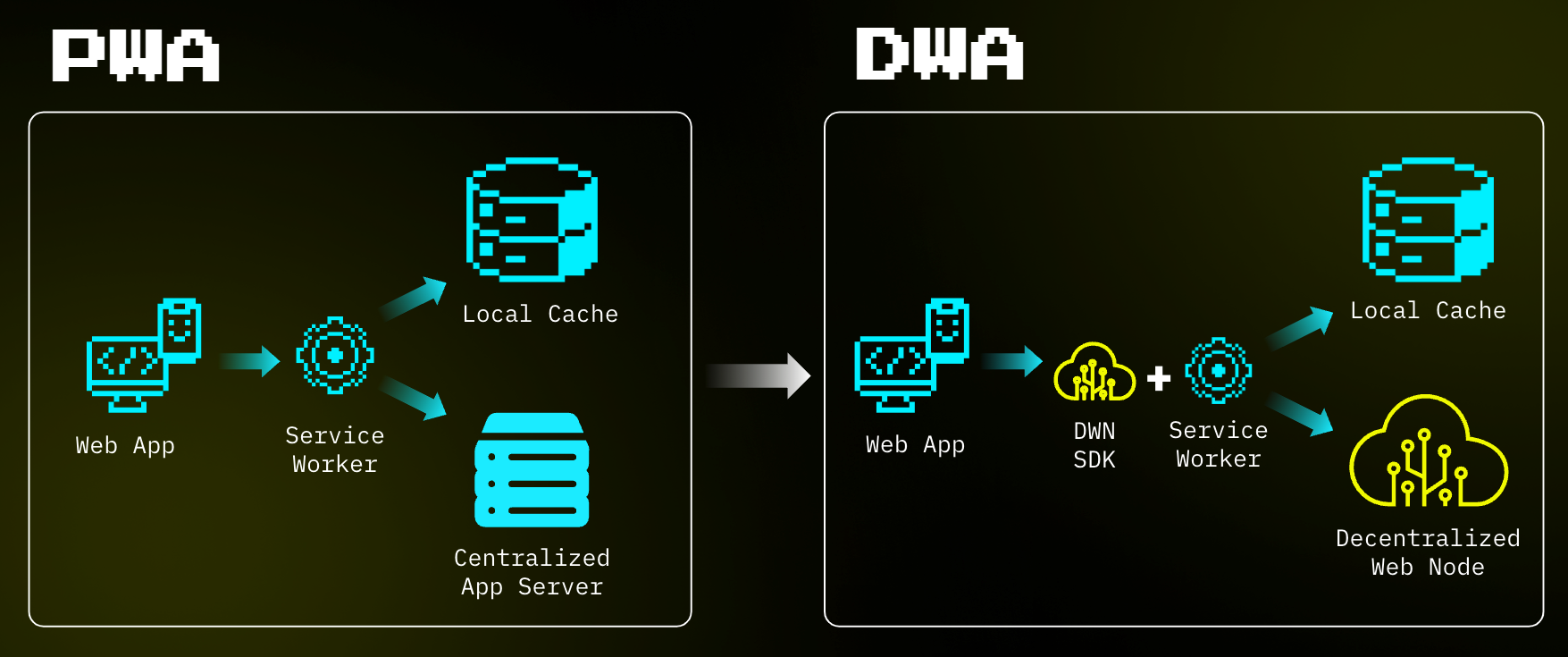
DWAs are a crucial aspect of the Web5 ecosystem, offering a new generation of applications that leverage the principles of decentralization to provide secure, transparent, and user-centric experiences.
DWAs differ from traditional web applications in their underlying infrastructure and approach to data management. Traditional web applications are often hosted on centralized servers, relying on intermediaries to manage user data and control access. This centralized approach raises concerns about data privacy, censorship, and manipulation.
In contrast, DWAs are built on decentralized networks, such as blockchain, eliminating the need for intermediaries. User data is stored and managed across multiple nodes, ensuring greater security and transparency. Additionally, DWAs often employ decentralized identifiers (DIDs) to empower users with control over their identities and data.
The decentralized nature of DWAs offers several advantages over traditional web applications:
Enhanced Privacy: Users have greater control over their data, deciding who has access and how it is used.
Increased Security: Decentralized networks are more resilient to cyberattacks, as data is not stored in a single location.
Transparency and Trust: The underlying blockchain technology provides a transparent and tamper-proof record of transactions, fostering trust among users.
User Empowerment: Users are not mere consumers of services; they are active participants in the network, contributing to its governance and development.
The potential applications of DWAs are vast and span various industries, including travel, music, social media, and finance. Let's explore some specific examples:
Decentralized Travel Applications: DWAs can revolutionize the travel industry by providing a secure and transparent platform for booking flights, accommodations, and tours. Users can interact directly with providers, eliminating the need for intermediaries and reducing fees.
Decentralized Music Applications: DWAs can transform the music industry by empowering artists to connect directly with fans, eliminating the need for centralized platforms that often take a significant share of revenue. Fans can own and control their digital music purchases.
Decentralized Social Media: DWAs can redefine social media interactions by giving users control over their data and privacy settings. Platforms can be governed by their users, ensuring transparency and accountability.
Decentralized Finance (DeFi) Applications: DWAs are driving the DeFi revolution, providing a range of financial services, such as lending, borrowing, and trading, without the need for centralized institutions. Users can access financial services directly, promoting financial inclusion.
As the Web5 ecosystem continues to mature, DWAs will play an increasingly prominent role, offering innovative solutions that address the limitations of traditional web applications and empower users to take control of their digital experiences. The future of the internet is decentralized, and DWAs are at the forefront of this transformative revolution.
Conclusion: A Glimpse into the Uncharted Territory of Web5
As we stand at the precipice of a transformative digital era, Web5 beckons us to embark on a journey into the uncharted territory of a decentralized internet. This revolutionary paradigm promises to reshape our relationship with data, redefine the boundaries of privacy, and redefine the very fabric of our digital interactions.
Web5's decentralized architecture empowers individuals to reclaim control over their data, identities, and online experiences. It heralds a new era where data is not extracted but empowered, where identities are managed with self-sovereignty, and where online interactions are transparent and equitable.
The path ahead is not without challenges – scalability, security, and user adoption remain formidable hurdles to overcome. However, the transformative potential of Web5 is undeniable. By addressing these challenges, we can unlock a future where individuals are the architects of their digital lives, where privacy is not a privilege but a fundamental right, and where the internet serves as a catalyst for positive societal change.
Web5 is not merely a technological advancement; it is a catalyst for societal transformation. It has the power to disrupt entrenched power structures, empower marginalized communities, and foster a more democratic digital landscape.
As we embrace the decentralized revolution, let us not forget that the future of Web5 is not predetermined; it is shaped by our collective actions and decisions. We have the opportunity to create a digital future where individuals are empowered, privacy is protected, and the internet serves as a force for good.
Together, let us seize this opportunity, navigate the uncharted territory of Web5, and shape a more equitable, secure, and user-centric digital future for all.
Glossary
Decentralized Identifier (DID): A unique identifier that allows individuals to control their digital identities and manage their data securely and privately.
Verifiable Credential: A tamper-proof proof of qualifications or attributes that can be shared without revealing unnecessary or sensitive data.
Decentralized Web Node (DWN): A distributed data storage mechanism that stores user data across multiple nodes, enhancing security and mitigating the risk of data breaches.
Reference
Web5: A Technical Overview and Research Agenda by Iansiti, Marco & Wright, Chris. (2022). Communications of the ACM, 65(11), 64-73.
The Future of the Internet is Decentralized by Andersen, Casper. (2023, March 21). Medium.
From Surveillance to Empowerment: How Web5 Can Change the Way We Interact Online by Allen, Austin. (2023, July 12). CoinDesk.
Web5: A Glimpse into the Future of Privacy, Censorship, and Digital Rights by Tapscott, Don. (2023, September 15). World Economic Forum.
Subscribe to my newsletter
Read articles from Abdulkareem Babatunde directly inside your inbox. Subscribe to the newsletter, and don't miss out.
Written by

Abdulkareem Babatunde
Abdulkareem Babatunde
I am a frontend developer